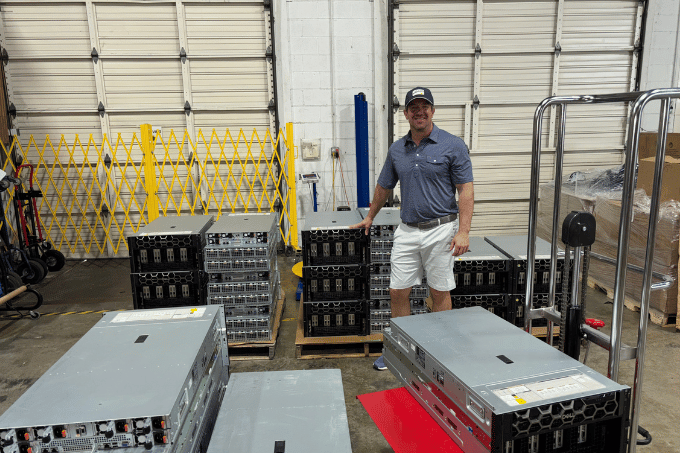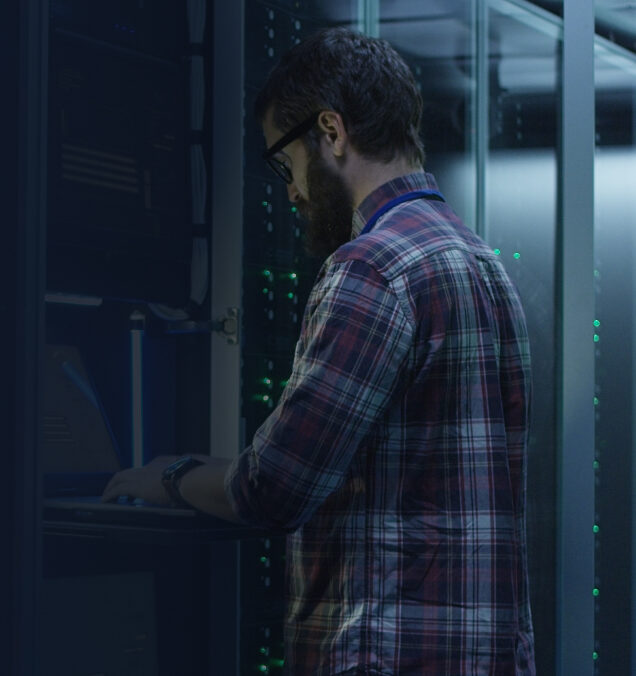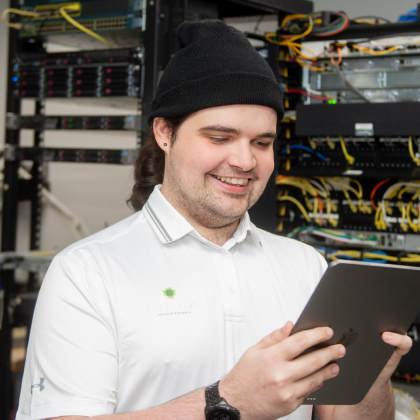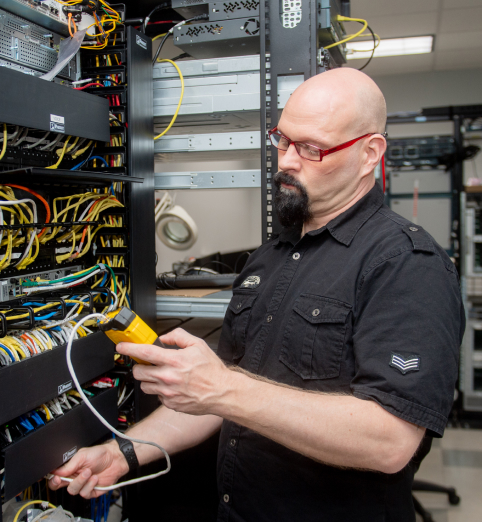Navigating Hardware Procurement for HPC Amidst Supply Chain Challenges in 2025
AI-powered research, analytics, model training, simulations, big data processing, and 3D rendering demand high computational power. However, global supply chain issues have made it harder for enterprises to upgrade their infrastructure to meet the AI demand.
IT teams face growing pressure to acquire high-performance computing (HPC) systems quickly, despite rising costs and limited availability of critical hardware.
In this article, we’ll explore how enterprises, research labs, data centers, and industries leveraging AI and HPC can navigate hardware procurement amidst supply chain challenges in 2025.
Why HPC Hardware Procurement Is a Supply Chain Challenge
The following are some global supply chain challenges companies are facing in 2025:
1. Demand for AI and HPC Infrastructure
AI applications and data-intensive workloads demand HPC hardware such as graphics processing units (GPUs), high-bandwidth memory, and networking components. Hyperscalers buy in bulk, leaving limited inventory for everyone else.
For example, a report predicts that GPU demand will increase from 1.5 million Nvidia H100 units in 2023 to 3 million next-gen chips by 2026.
2. Semiconductor Shortages Persist
Limited manufacturing capacity, trade restrictions, and shipping delays are causing the semiconductor shortage. Factories don’t have enough raw materials and parts to build chips that meet the growing market demand.
3. Geopolitical Risk and Trade Tensions
Trade restrictions, export controls, and tariffs, especially involving China, Taiwan, and the U.S., have disrupted the global flow of critical materials and finished hardware.
5. OEM Lead Times Are at Historic Highs
Major vendors have reported lead times ranging from 6 to 12 months for high-end GPU servers, interconnects, and memory-heavy compute nodes. This makes it difficult for enterprises to scale infrastructure on short notice.
Why Companies Can’t Afford Timely HPC Hardware Upgrades
Bringing new HPC hardware online is a slow, complex process involving engineering, permitting, and installation. These steps rely on available components, skilled labor, and supporting infrastructure. But the demand for AI infrastructure is growing much faster than current supply chains can handle.
Data centers and enterprise teams need high-performance GPUs, custom AI accelerators, cooling systems, and high-bandwidth memory. But these components are already on backorder, with long lead times due to limited foundry capacity, packaging constraints like CoWoS, and supply pressure.
According to Bain’s 2024 report, demand for AI-related hardware, especially GPUs and AI processors, is expected to grow by 25% to 35% annually through 2027. Most suppliers can only scale production by a fraction of that each year.
AI data center infrastructures also take 4–6 years to build and deploy, according to the report. Enterprises that wait risk falling behind, especially in compute-intensive fields like model training, inference, and generative AI deployment.
This puts IT teams under pressure to secure any available hardware, leading to panic procurement and overspending just to keep up.
Why “Latest-Gen” Isn’t Always the Smartest Bet
Upgrading to the latest-gen hardware may sound attractive, but it often delivers less value than expected. For example, while the H100 GPUs offer performance gains over the A100, many AI and HPC workloads don’t fully utilize that extra power. The price gap, however, is significant.
Most teams end up paying a premium for marginal improvements. In many cases, old-gen hardware delivers more than enough computing power at a lower cost and with shorter lead times.
There’s also the issue of compatibility. Newer hardware may require updates to software stacks, frameworks, and drivers. This causes delays, bugs, and integration work. Older systems have better stability and broader support across enterprise environments.
IT teams need shorter lead times, lower costs, and quick setups to meet performance demands.
Rethinking HPC Hardware Procurement: Strategy Over Specs
Enterprises need to build procurement into their infrastructure roadmap. IT teams should adopt strategy-first thinking, such as:
- Mixing new and secondary hardware to balance cost and speed
- Upgrading the existing IT infrastructure with constant maintenance and support
- Building out procurement plans based on actual workload needs.
Many companies are moving to secondary market hardware. These assets are refurbished, previous-gen, or new-in-box enterprise gear that’s been resold after initial deployment or overstock. The hardware is fully tested, often certified, and built to run at scale.
For teams under pressure to deploy quickly and stay within budget, the secondary market offers instant availability, cost savings, compatibility, and sustainability. But businesses need IT experts who procure hardware accurately to match their workload demands.
Inteleca offers hardware procurement tailored to your budget limits and infrastructure needs. Our team specializes in sourcing, configuring, and deploying both new and certified secondary IT hardware.
Best Practices for HPC Hardware Procurement in 2025
Here are some best practices for hardware procurement for HPC:
1. Build a Tiered Procurement Strategy
Design a tiered procurement strategy based on your existing infrastructure. This requires matching the type of hardware you buy to the actual needs of your workloads.
Instead of treating every hardware purchase as equally urgent or high-spec, you divide your infrastructure into three tiers based on performance requirements, workload type, and how quickly you need the equipment.
Here’s how you can adjust your procurement tiers:
- Tier 1 covers mission-critical workloads like model training, real-time inference, or large-scale simulations. These require top-spec, latest-generation hardware with long-term vendor support.
- Tier 2 includes development, testing, and internal workloads that still need solid performance but don’t justify premium pricing. You can buy old-gen or refurbished hardware here.
- Tier 3 is for non-critical tasks like backup, overflow, or temporary capacity.
This approach gives you more control over spend, lead time, and resource allocation.
2. Use the Secondary Market to Bypass Lead Times
Buy from the secondary hardware market to avoid long lead times on new HPC hardware. Refurbished, new-in-box, and previous-gen equipment from enterprises like NVIDIA, AMD, Dell, and HPE are often available immediately.
For workloads that don’t demand the latest specs, secondary hardware offers better performance at a lower cost. It’s ideal for urgent deployments, scaling internal environments, or supporting dev and backup systems.
3. Pre-Plan for AI Hardware Lifecycles
AI hardware lifecycles are short, but not every upgrade is urgent. Some projects need new GPUs, while others run just fine on last-gen accelerators.
Pre-planning helps businesses avoid panic buying and mismatched systems. It also gives businesses time to compare new and secondary options, assess compatibility, and avoid rushed integration.
Inteleca offers custom HPC solutions to support this by helping companies map the right hardware to each phase of their AI and HPC projects.
4. Refurbish or Repair Old Hardware
Refurbishing or upgrading existing systems can extend performance and reduce costs. Many servers, GPUs, and networking components still have years of usable life. Businesses can work with IT experts who clean, test, and optimize their existing hardware for AI workloads.
Inteleca is an ISO-certified IT services provider. We help companies extend the life of their equipment and maintain optimal performance. Our in-house lab team can repair your equipment or send a replacement, minimizing downtime and giving teams more flexibility.
5. Work on Risk Management and Resilience Building
HPC systems risk long lead times and supply chain disruptions. Companies need a resilient procurement strategy that includes multiple suppliers and backup options for critical hardware.
Stocking spare components can help businesses avoid delays when something breaks or demand increases. You should also plan for failures by setting up monitoring, investing in maintenance, and refurbishing when it makes sense.
Bottom Line
Supply chain delays, growing AI workloads, and limited availability make traditional procurement slow. That’s why IT teams need smart hardware procurement for HPC systems. They also need to plan hardware lifecycles, buy from the secondary market, and refurbish what they can to avoid disruptions.
Inteleca provides support across your business’s entire hardware lifecycle. From sourcing and configuring HPC clusters to repairing and decommissioning infrastructure, our team is here to help.
Contact our team for custom HPC and AI solutions today.



